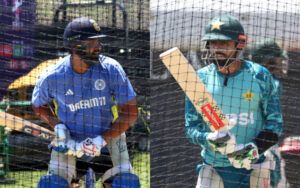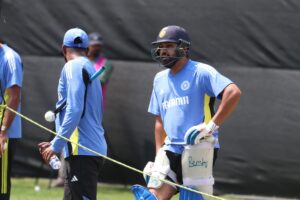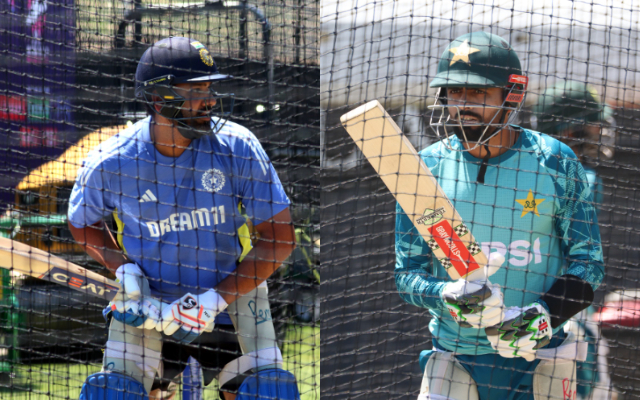
This is the biggest game of the T20 World Cup. India versus Pakistan generates revenue for the International Cricket Council, which in turn is used for the development of the sport. India-Pakistan matches are not merely contests between bat and ball. They are cultural events, drawing in big crowds in the stands and millions of eyeballs in front of the telly.
On Sunday, India and Pakistan will square off in their T20 World Cup Group A fixture and some premium tickets are priced at $10,000. And yet, the 34,000-seater Nassau County International Cricket Stadium in New York is expected to be full. Fans will turn up to see quality cricket from the two Asian giants. Will they get it? Will the New York pitch allow quality cricket? A big question mark remains.
The ICC’s experiments of holding World Cups in North America haven’t yet produced the desired results. The 2007 World Cup (50-over format) in the West Indies was a flop. The T20 World Cup in the Caribbean three years later wasn’t successful either. From that perspective, the global body’s venture of holding one part of the ongoing T20 World Cup in the United States is ambitious. From having a 20-team T20 World Cup to expanding the game further, the ICC has banked heavily on the India-Pakistan game in New York. No wonder that ahead of the marquee fixture, they are nervous.
The New York pitches, with excessive lateral movement and variable bounce have left a massive cloud hanging over the India-Pakistan game. The drop-in decks that have their biological parent in Adelaide are underprepared because they didn’t get the time to bed in. A new pitch requires at least 14-15 games to bed in. The ICC couldn’t do that, for the venue was handed over to them very late, only a few days before the start of the tournament.
For the Latest Sports News: Click Here

A dodgy surface can make a game of cricket a lottery. So, any prediction about the India-Pakistan fixture becomes a high-risk affair. India know the conditions better, for they have played two matches at this venue – a warm-up game against Bangladesh followed by their tournament opener against Ireland. But in neither of those matches did they face world-class fast bowling. It is going to be different on Sunday.
Pakistan’s four-pronged pace attack comprising Shaheen Shah Afridi, Naseem Shah, Mohammad Amir and Haris Rauf can make life difficult for any batsman in normal conditions, let alone on an unpredictable surface. All of them can go north of 140kph and as Andy Flower said, on the New York pitch, that could be “bordering on dangerous”. In the first game against Ireland, Rishabh Pant took a knock on the left elbow, when a Josh Little delivery rose awkwardly off a length. And Little bowls at medium pace.
India’s response to Pakistan’s pace attack would be via Jasprit Bumrah, Mohammed Siraj, Arshdeep Singh and Hardik Pandya. Bumrah is pace plus top quality, while both Siraj and Pandya can hit the deck hard. Also, technically and performance-wise, Pakistan’s batting is weaker, which gives India a clear edge going into the game.
It needs to be seen if India play Kuldeep Yadav in place of Axar Patel. Kuldeep’s inclusion will give the team a genuine wicket-taker, but it might affect team balance, as Axar is a very capable lower-order batsman and he can provide the extra batting cushion on a tricky surface. Any chance of going with three spinners is ruled out, with Rohit Sharma making it clear that the team would stick to four pacers during the US-leg of the World Cup.

“Don’t think we can play four spinners here,” the India captain had said at the post-match presentation after the Ireland game. “If the conditions are there for the seamers, we wanted them in the squad. The spinners will play their part later in the tournament.”
India, as of now, have no injury concerns. Rohit got hit on the right thumb while taking throwdowns at the nets on Friday. But he appears to be OK. For Pakistan, spin-bowling all-rounder Imad Wasim has passed fit and he might replace Azam Khan.
On the face of it, India would be under less pressure, for even if they lose to Pakistan, their progress to the Super Eights is unlikely to be hampered. They are expected to win their remaining two group league games – against the US and Canada – comfortably. Pakistan don’t enjoy that leeway, after their shock defeat to the US. They have to win to get their campaign back on track.
Coming back to the New York pitch, Rohit spoke about thriving in the difficult moments. “The blows count for nothing,” he said at the pre-match press conference. “We thrive on these difficult moments. It’s the World Cup, so nothing can get bigger than this. The blows can be secondary and putting the team’s cause first.”
From the ICC’s point of view, however, a poor pitch undermining an India-Pakistan contest would bring bad press in its wake. Efforts have been taken to get things right, but it’s a race against time.
Also Read: Pakistan need to turn up for the rivalry to stay relevant




